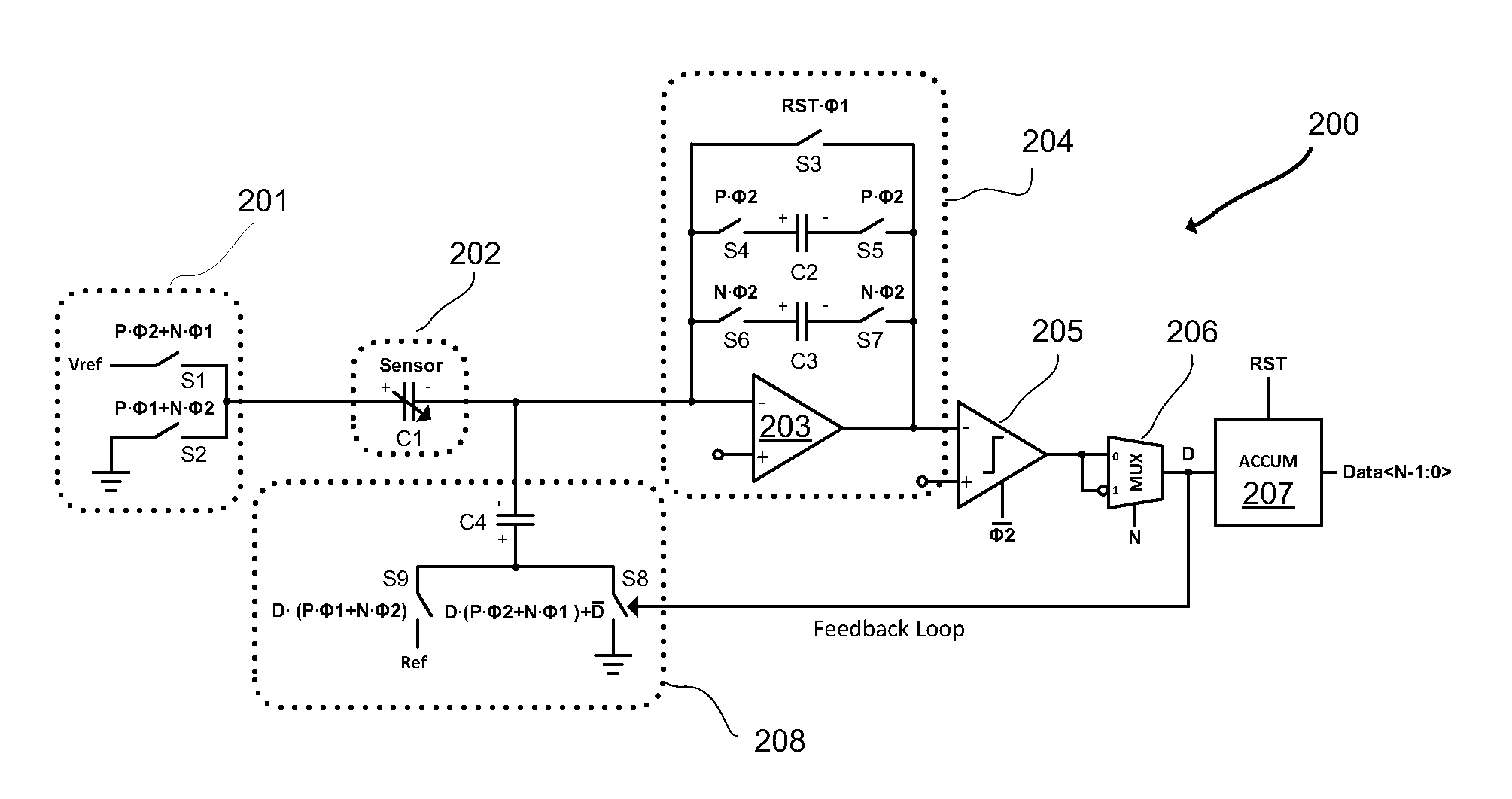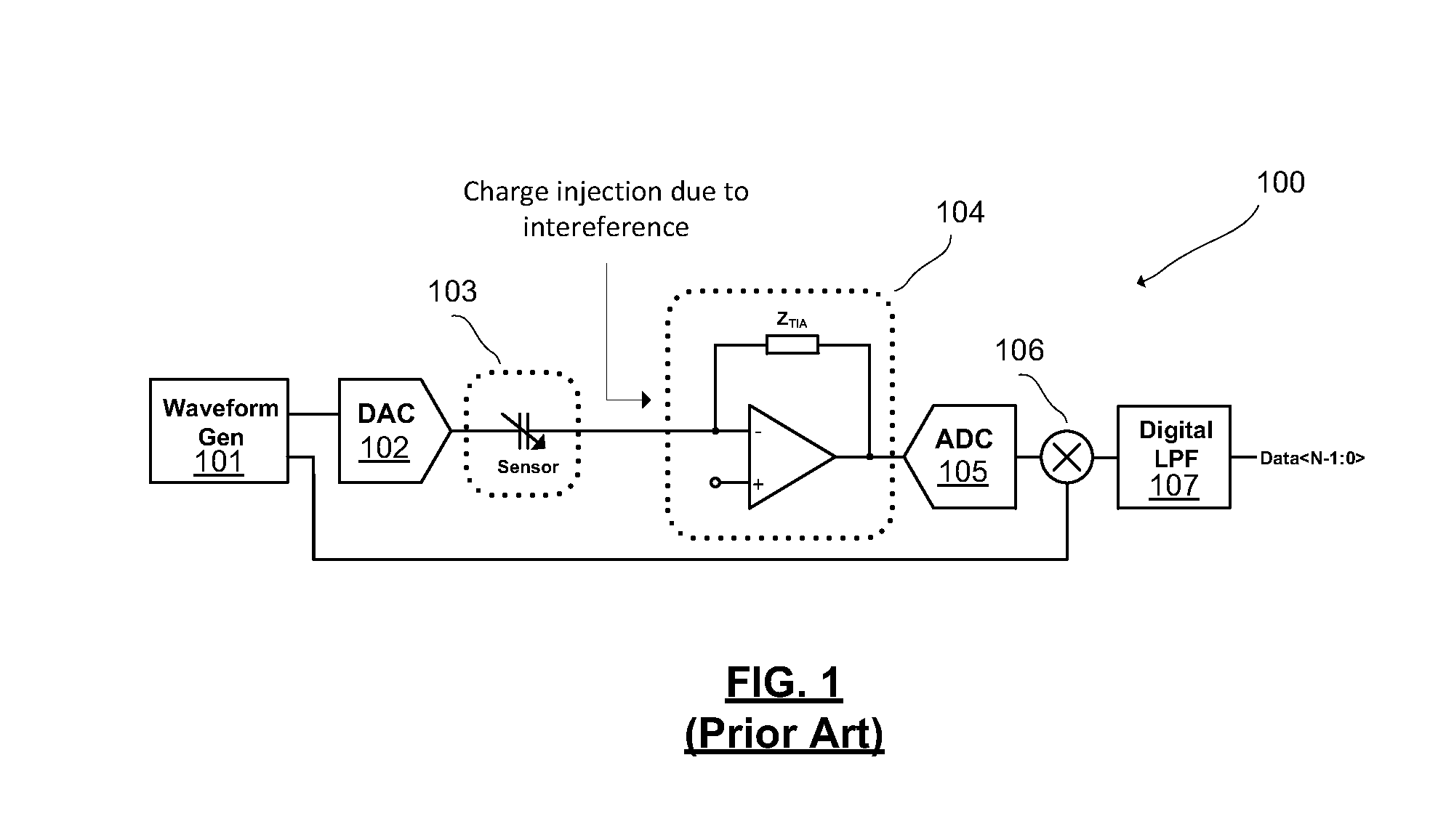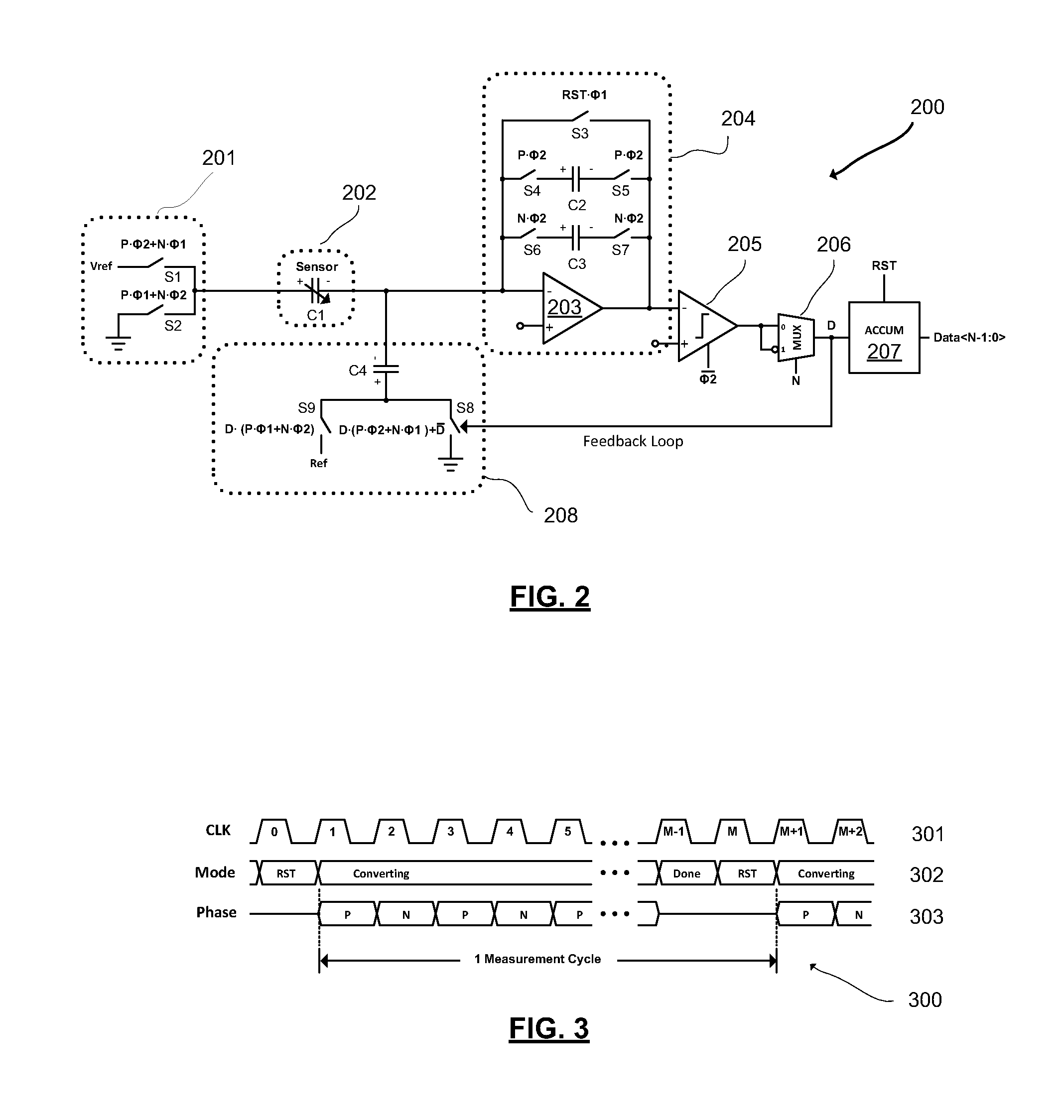Capacitive touch sensing system with interference rejection
a capacitive touch and sensing technology, applied in the field of capacitive touch sensors, can solve the problems of interference rejection, complex systems of such systems, and less suitable for applications
- Summary
- Abstract
- Description
- Claims
- Application Information
AI Technical Summary
Benefits of technology
Problems solved by technology
Method used
Image
Examples
Embodiment Construction
[0021]A switched capacitor is an electronic circuit element used for discrete time signal processing. It works by moving charges into and out of capacitors when switches are opened and closed. Usually, non-overlapping signals are used to control the switches, so that not all switches are closed simultaneously. The operations of switched capacitor circuits can be described mathematically using difference equations with corresponding frequency domain transfer functions. One or more of the following embodiments will include circuits using switched capacitance circuits.
[0022]FIG. 2 illustrates one embodiment of a circuit 200 for capturing mutual capacitive touch sensor 202 inputs with interference rejection in accordance with the technology described herein. In particular, a circuit layout is shown that accomplishes capacitive touch sensing and interference rejection using a minimal amount of circuitry and digital logic. Capacitive touch sensor 202 including at least variable capacitor ...
PUM
 Login to View More
Login to View More Abstract
Description
Claims
Application Information
 Login to View More
Login to View More - R&D
- Intellectual Property
- Life Sciences
- Materials
- Tech Scout
- Unparalleled Data Quality
- Higher Quality Content
- 60% Fewer Hallucinations
Browse by: Latest US Patents, China's latest patents, Technical Efficacy Thesaurus, Application Domain, Technology Topic, Popular Technical Reports.
© 2025 PatSnap. All rights reserved.Legal|Privacy policy|Modern Slavery Act Transparency Statement|Sitemap|About US| Contact US: help@patsnap.com



